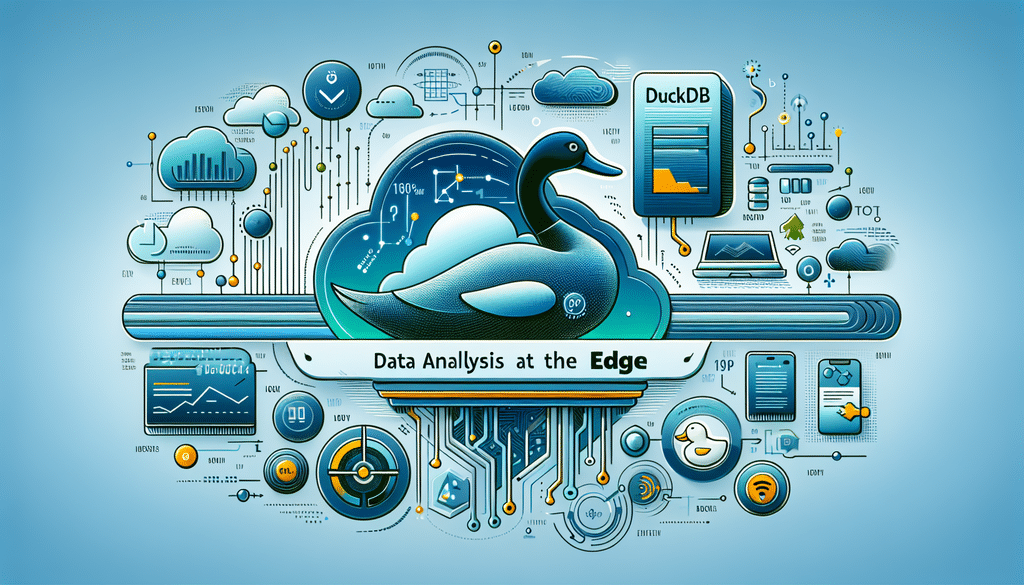As the demands of data analysis evolve, analytics tools must keep pace to provide efficient and robust solutions. DuckDB, with its latest 1.2 update, is making significant strides in the realm of edge data analysis. Designed to empower developers and analysts in their quest for seamless data handling, this update brings new features, optimized performance, and exciting integrations.
What is DuckDB?
DuckDB is an open-source database management system, often referred to as an “in-process” database. Its lightweight design allows it to be embedded directly into applications, making it ideal for data analytics tasks. With a focus on analytical workloads and compatibility with various programming languages, DuckDB has gained popularity among data scientists and engineers alike.
Key Features of DuckDB
- In-Process Query Execution: DuckDB can be run directly within a host program, eliminating the need for a dedicated server.
- Memory Efficiency: The database optimizes storage and computation operations, making it highly efficient for analytical tasks.
- SQL Interface: Users can leverage familiar SQL commands for querying, making the transition to DuckDB easier for those accustomed to traditional databases.
- Seamless Integration: It integrates with various data science tools such as Python, R, and Julia.
Enhancements in DuckDB 1.2
The 1.2 version of DuckDB comes with numerous enhancements, particularly aimed at improving edge data analysis capabilities. Let’s explore the standout features introduced in this latest release.
1. Enhanced Support for Parquet Files
The latest update significantly improves the support for Parquet files, a popular columnar storage file format used in big data processing. DuckDB now provides:
- Faster Read/Write Operations: Users will experience improved performance when accessing large datasets stored in Parquet format.
- Support for Nested Structures: The ability to handle complex nested data structures offers greater flexibility in data manipulation.
2. Improved Performance and Query Optimization
DuckDB 1.2 also comes with optimizations that enhance the performance of query execution. Features include:
- New Query Planner: A revised query planner ensures that queries are executed in the most efficient manner possible, leading to quicker response times.
- Vectorized Execution: By leveraging vectorized processing techniques, DuckDB can handle larger datasets more effectively.
3. Advanced UDF Support
User-Defined Functions (UDFs) allow users to extend the functionality of DuckDB by writing custom functions. The 1.2 version introduces:
- Broader Language Support: Beyond SQL, users can create UDFs using languages like Python and R, making it easier to implement complex calculations and algorithms.
- User Function Registry: A convenient registry simplifies managing and accessing UDFs across different projects.
4. Enhanced Security Features
As data security remains a top priority, DuckDB has added features ensuring user data is protected. Notable enhancements include:
- Improved Authentication Protocols: Updated authentication methods help safeguard against unauthorized access.
- Data Encryption: Options for on-disk and in-memory encryption provide additional layers of security for sensitive information.
Applications of DuckDB 1.2 in Edge Computing
With the rise of edge computing and the need for real-time data analysis closer to data sources, DuckDB 1.2 positions itself as an innovative solution. Here are a few prominent applications:
1. IoT Data Analysis
In the realm of Internet of Things (IoT), devices generate vast amounts of data that need immediate analysis. DuckDB 1.2 facilitates:
- Real-Time Analytics: Allowing edge devices to process data streams in real-time without relying on cloud storage.
- Efficient Data Aggregation: Aggregating data locally reduces latency and bandwidth costs.
2. Mobile and Web Applications
Many mobile and web applications require robust backend support for analytics. The 1.2 update empowers developers to:
- Embed Advanced Analytics: Integrate powerful analytics capabilities directly into applications, enhancing user experiences.
- Reduce Latency: Perform calculations locally to ensure quick responses and fluid interactions.
3. Data Warehousing Solutions
For businesses looking to streamline their data warehousing, DuckDB 1.2 presents valuable options:
- Local Querying: Facilitate querying large datasets stored locally, bridging on-premises and cloud environments.
- Cost Efficiency: By reducing reliance on external servers, companies can save on operational costs.
Final Thoughts
The DuckDB 1.2 update marks a significant advancement in the tool’s capabilities, providing users with enhanced features that cater specifically to edge data analysis. Whether optimizing query performance or integrating seamlessly with various data sources and formats, DuckDB continues to champion the needs of modern data professionals. With its robust architecture and innovative features, DuckDB proves itself as a formidable player in the landscape of data analytics, making it an essential tool for anyone looking to harness the power of their data effectively.
As the field of data analytics evolves, DuckDB stands ready to meet the challenges of today and tomorrow, promising exciting possibilities for users and developers alike.





